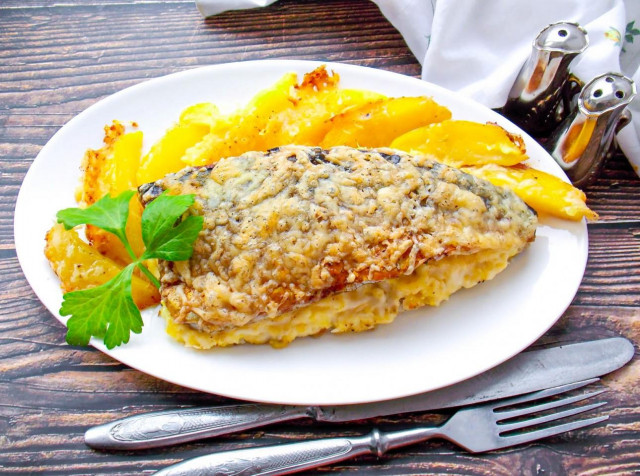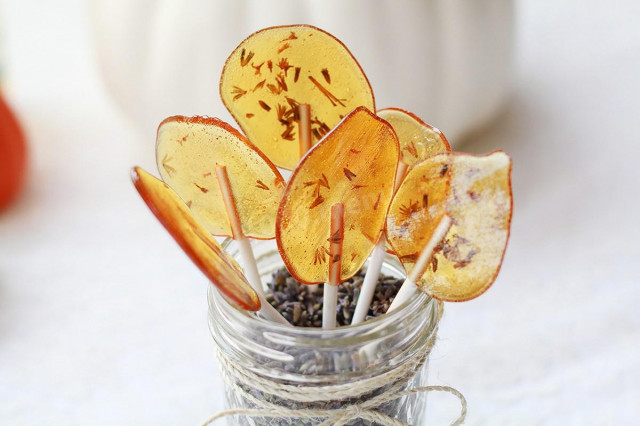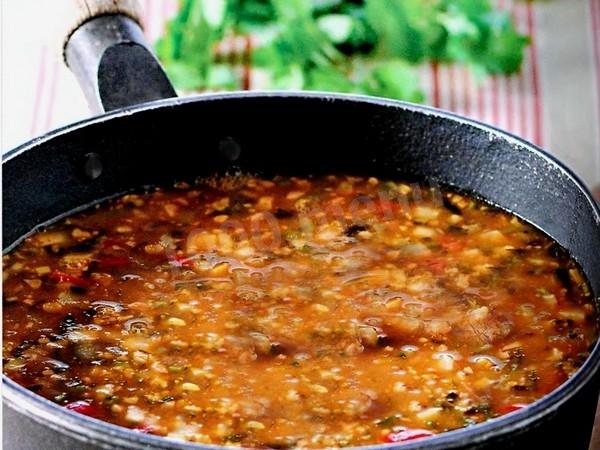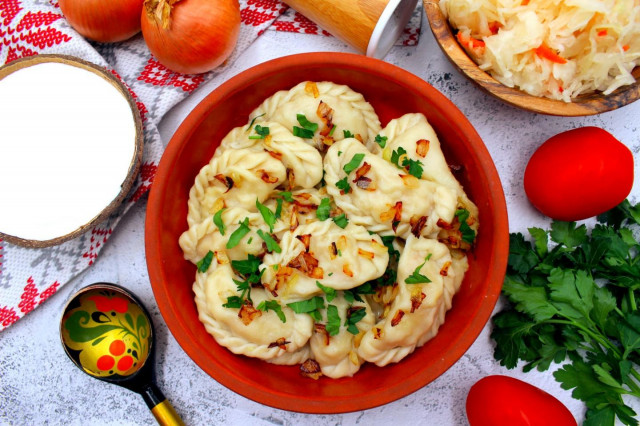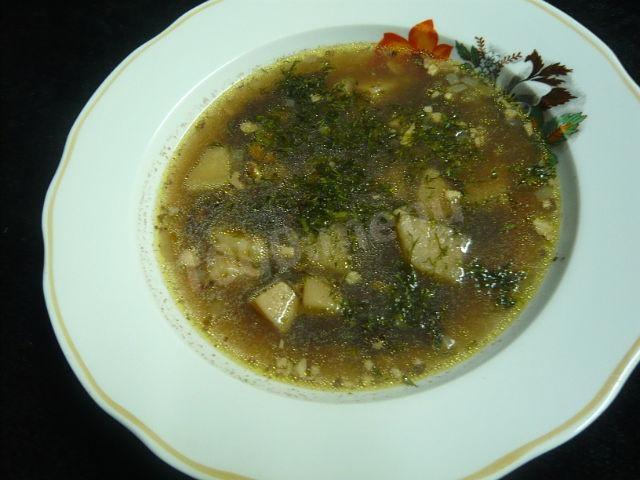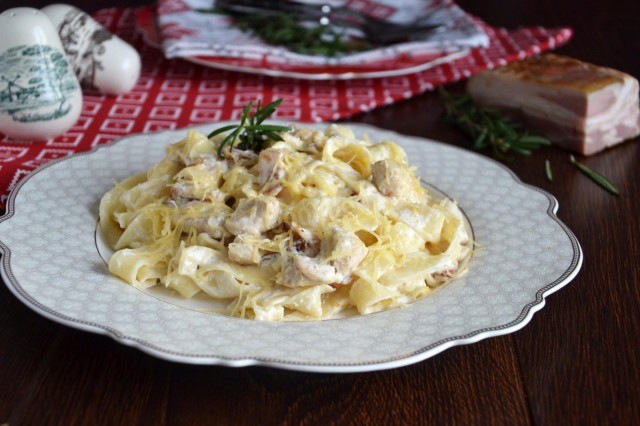Composition / ingredients
Step-by-step cooking
Step 1:
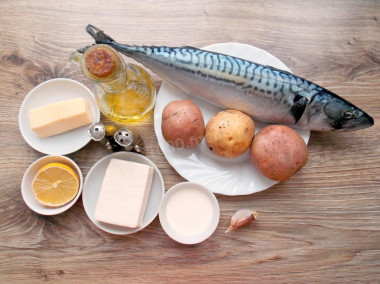
How to bake mackerel with cheese in the oven? Prepare the products. Take the freshest mackerel, without damage and foreign odors. Fresh fish has elastic flesh, not cloudy eyes and pink gills. If this is not the case, it is better to abandon the fish. Choose high-quality cheese, without vegetable additives.
Step 2:
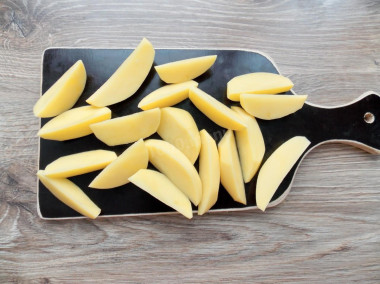
Prepare the potatoes. Wash it well, peel it and cut it into boat slices. If you do not like such slicing, then you can cut it into cubes or circles.
Step 3:
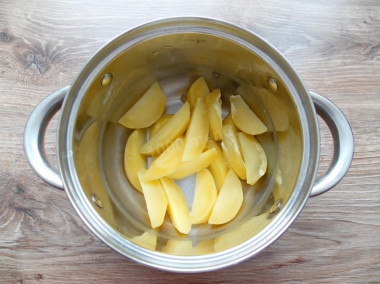
Put the potatoes in a saucepan, fill it with water and put it on fire. Add salt and bring to a boil, then boil the potatoes over medium heat for 7-10 minutes, until half cooked. Then remove from the heat and drain the water completely. Thus, the potatoes will be baked at the same time as the fish.
Step 4:
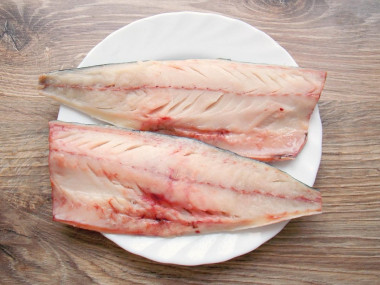
Wash the mackerel, cut off the head and tail. Peel it from the entrails and cut it into fillets. How to properly cut a whole fish into fillets? Remove the tail, head and fins. Cut the carcass along the spine to the spine. Turn it on its side. With a sharp knife, cut the meat from the backbone bone. Turn the carcass over and cut the fillet from the other side. Clean the inside by removing the black film, as it is bitter and will spoil the taste.
Step 5:
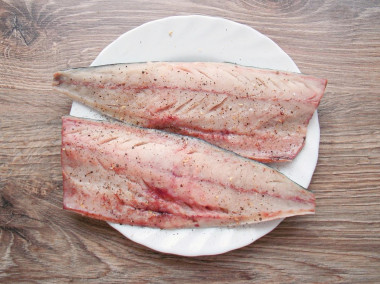
Rinse and dry the fillets with a paper towel, then season with salt and pepper. I just use freshly ground black pepper, but you can take other spices. Pour lemon juice over the fish and put it in the refrigerator for 30 minutes for marinating.
Step 6:
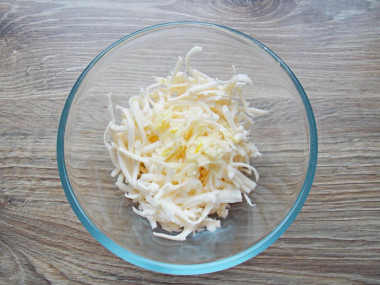
Grate the processed cheese on a fine grater. To make it easier to rub, it is better to freeze it a little beforehand. Add grated garlic to the cheese and mix.
Step 7:
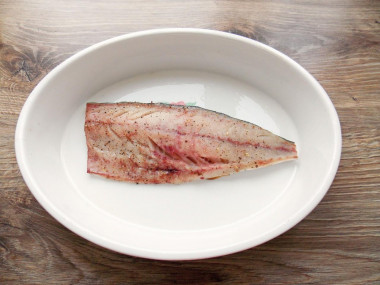
Turn on the oven to preheat to 180 degrees. Pour vegetable oil into the baking dish and lubricate it, lay one half of the mackerel skin down.
Step 8:
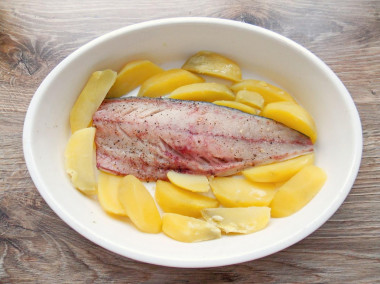
Arrange the cooked potato slices around the fillet.
Step 9:
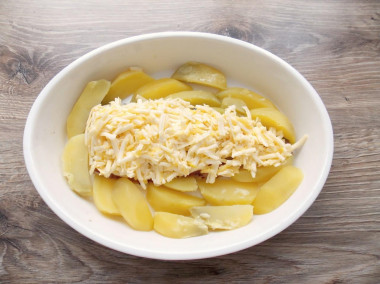
Put the cheese filling on the first half of the mackerel and spread it over the entire surface.
Step 10:
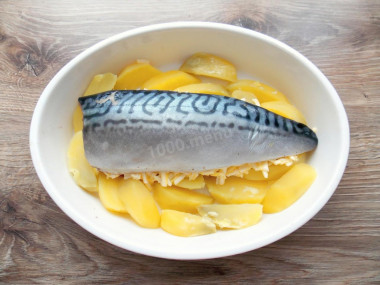
Cover the cheese with the second half of the mackerel, press down a little.
Step 11:
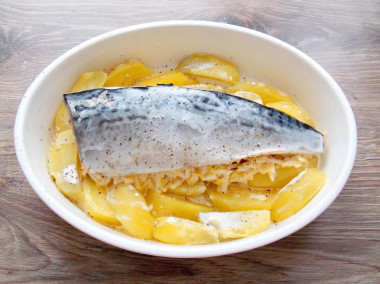
Grease the top of the mackerel and potatoes with sour cream, pepper everything on top.
Step 12:
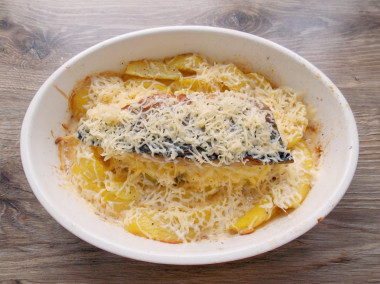
Put the fish and potato pan in a hot oven and bake for 20 minutes. Then remove the mold from the oven and sprinkle with grated hard cheese.
Step 13:
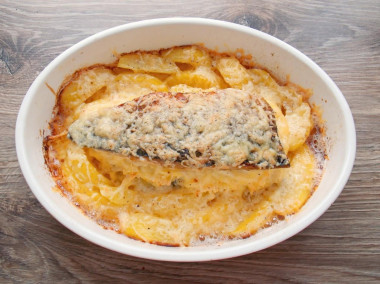
Put the dish back in the oven and bake it for another 10-15 minutes, until the desired crust.
Step 14:
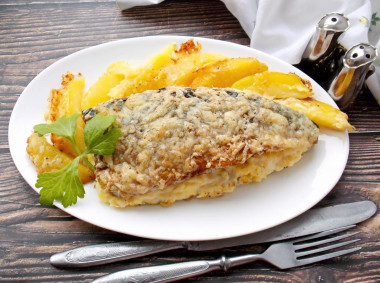
Remove the finished mackerel from the oven, transfer to a plate along with the potatoes and serve to the table. Bon appetit!
So you can cook not only mackerel, but also any other fish. You can add herbs to the cheese filling, preferably parsley and finely chopped onions.
Any cheese is suitable for this dish — hard, semi-hard, soft, like mozzarella. The main thing is that it is tasty, high-quality, without milk fat substitutes and melts well.
Keep in mind that everyone's ovens are different. The temperature and cooking time may differ from those specified in the recipe. To make any baked dish successful, use useful information about the features of ovens !
Root vegetables are best washed with a brush or a hard sponge under running water.
Caloric content of the products possible in the composition of the dish
- Ripe potatoes - 80 kcal/100g
- Baked potatoes - 70 kcal/100g
- Mashed potatoes - 380 kcal/100g
- Boiled potatoes - 82 kcal/100g
- Potatoes in uniform - 74 kcal/100g
- Fried potatoes - 192 kcal/100g
- Sour cream with 30 % fat content - 340 kcal/100g
- Sour cream with 25 % fat content - 284 kcal/100g
- Sour cream with 20 % fat content - 210 kcal/100g
- Sour cream of 10% fat content - 115 kcal/100g
- Sour cream - 210 kcal/100g
- Lemon - 16 kcal/100g
- Lemon zest - 47 kcal/100g
- Smoked mackerel - 221 kcal/100g
- Boiled mackerel - 211 kcal/100g
- Fresh mackerel - 181 kcal/100g
- Dutch cheese - 352 kcal/100g
- Swiss cheese - 335 kcal/100g
- Russian cheese - 366 kcal/100g
- Kostroma cheese - 345 kcal/100g
- Yaroslavsky cheese - 361 kcal/100g
- Altai cheese 50% fat content - 356 kcal/100g
- Soviet cheese - 400 kcal/100g
- Cheese "steppe" - 362 kcal/100g
- Uglich cheese - 347 kcal/100g
- Poshekhonsky cheese - 350 kcal/100g
- Lambert cheese - 377 kcal/100g
- Appnzeller cheese with 50% fat content - 400 kcal/100g
- Chester cheese with 50% fat content - 363 kcal/100g
- Edamer cheese with 40% fat content - 340 kcal/100g
- Cheese with mushrooms of 50% fat content - 395 kcal/100g
- Emmental cheese with 45% fat content - 420 kcal/100g
- Gouda cheese with 45% fat content - 356 kcal/100g
- Aiadeus cheese - 364 kcal/100g
- Dom blanc cheese (semi-hard) - 360 kcal/100g
- Lo spalmino cheese - 61 kcal/100g
- Cheese "etorki" (sheep, hard) - 401 kcal/100g
- White cheese - 100 kcal/100g
- Fat yellow cheese - 260 kcal/100g
- Altai cheese - 355 kcal/100g
- Kaunas cheese - 355 kcal/100g
- Latvian cheese - 316 kcal/100g
- Limburger cheese - 327 kcal/100g
- Lithuanian cheese - 250 kcal/100g
- Lake cheese - 350 kcal/100g
- Gruyere cheese - 396 kcal/100g
- Garlic - 143 kcal/100g
- Processed cheese with 60 % fat content - 354 kcal/100g
- Processed cheese with 45 % fat content - 294 kcal/100g
- Cheese "megle" - 590 kcal/100g
- Tartar cheese - 348 kcal/100g
- Cheese "cheese "shavru" (goat) - 173 kcal/100g
- Viola cheese - 307 kcal/100g
- Ground black pepper - 255 kcal/100g
- Vegetable oil - 873 kcal/100g
- Salt - 0 kcal/100g

